
This teacher's guide for The Misfits by James Howe containes discussion questions, activities, and research assignments.
- Subject:
- English Language Arts
- Material Type:
- Activity/Lab
- Provider:
- Simon and Schuster
- Date Added:
- 04/13/2017

This teacher's guide for The Misfits by James Howe containes discussion questions, activities, and research assignments.
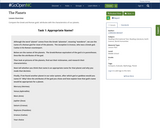
Compare the Greek and Roman gods' attributes with the characteristics of our planets.
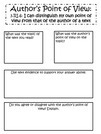
Many students read without questioning a text or analyzing the author's viewpoint. This lesson will introduce students to recognizing point of view of the author. By reading two versions of the same tale and completing an interactive Venn diagram, students recognize that there are not only different versions of a story, but also different viewpoints to consider when reading.

This lesson plan introduces the practice of using primary sources; where to find primary sources, what they are, how to examine them, and how to construct a context to tell more of the story.Students will:Analyze personal artifacts as primary sources; Analyze historical primary sources; andConnect historical text with primary sources.Materials/Links Included:Primary Source Analysis ToolPrimary source setsTeacher's guide to Analyzing Primary Sources
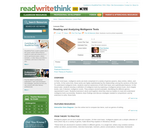
In this lesson, students will read and analyze several examples of different texts, identifying the different genres represented in each. Students brainstorm alone and together what they need as readers to read and understand multigenre texts successfully. Students share findings and discuss strategies needed to comprehend, and by extension to write, these texts.

This lesson is designed to engage students through reader's theater during the guided reading lesson. Students can practice fluency using an alternative format.

This course was created by the Rethink Education Content Development Team. This course is aligned to the NC Standards for 6th Grade English Language Arts.

This course was created by the Rethink Education Content Development Team. This course is aligned to the NC Standards for 6th Grade ELA.
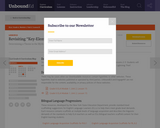
In this lesson, students will briefly reread the Cronus myth, which they have already read closely in Lessons 2-3. Students then will write a literary analysis connecting a theme of the Cronus myth to a theme in The Lightning Thief.
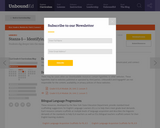
In this lesson, students will determine rules to live by from the poem "If," how these rules are communicated, and how these rules connect to Bud, Not Buddy.
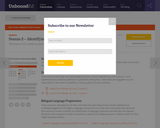
IN this lesson, very similar in structure to the lesson on Stanza 1, students will determine rules to live by and discuss how those rules are communicated, as well has how they connect to the rules/themes in Bud, Not Buddy.
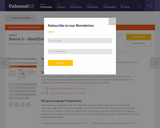
In this lesson, students will answer more questions independently in order to prepare for the mid-unit assessment.

Students will receive a choice board of different activities and will have to choose one. After choosing their activity, students can be placed into small groups to work collaboratively or can work independently. Each team/student will be presenting to either the whole class or their small group.
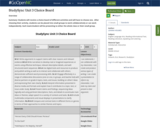
Summary: Students will receive a choice board of different activities and will have to choose one. After choosing their activity, students can be placed into small groups to work collaboratively or can work independently. Each team/student will be presenting to either the whole class or their small group.
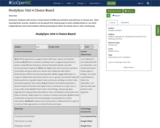
Summary: Students will receive a choice board of different activities and will have to choose one. After choosing their activity, students can be placed into small groups to work collaboratively or can work independently. Each team/student will be presenting to either the whole class or their small group.
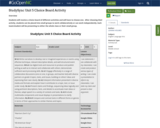
Students will receive a choice board of different activities and will have to choose one. After choosing their activity, students can be placed into small groups to work collaboratively or can work independently. Each team/student will be presenting to either the whole class or their small group.

Students will receive a choice board of different activities and will have to choose one. After choosing their activity, students can be placed into small groups to work collaboratively or can work independently. Each team/student will be presenting to either the whole class or their small group.
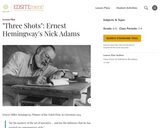
In this lesson, students study issues related to independence and notions of manliness in Ernest Hemingway’s “Three Shots” as they conduct in-depth literary character analysis, consider the significance of environment to growing up and investigate Hemingway’s Nobel Prize-winning, unique prose style. In addition, they will have the opportunity to write and revise a short story based on their own childhood experiences and together create a short story collection.
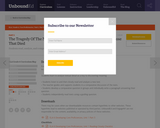
In this 3 day lesson that includes 4 activities, students will learn how to analyze textual detail as a key to discovering meaning, focusing on reading, analyzing, and comparing texts. Students will also develop a comparative question in groups and individually write a paragraph answering their question.

This lesson allows students to see and experience how a story can drastically change when told from the perspective of a character whose voice was not heard in the story's original form. After reading and discussing a New York Times review of the latest Tarzan film, students will select a favorite children's story and rewrite it from another character's point of view, focusing on the character's view of the elements of the plot, other characters, and himself or herself.
\